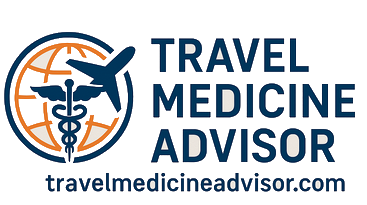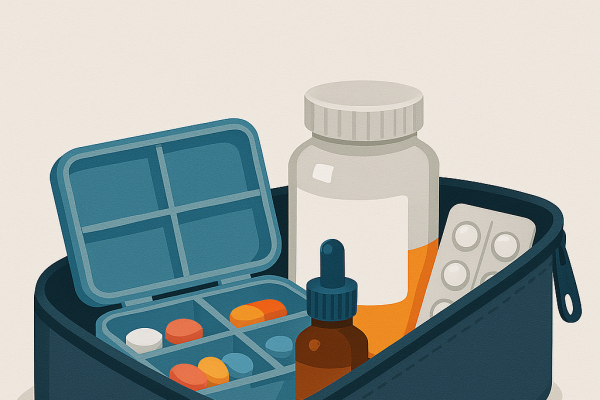Can You Travel By Plane with a Heart Disease
Planning air travel with a heart condition? Reduced cabin pressure and lower oxygen levels can pose unique challenges. This comprehensive guide provides crucial information on pre-flight consultations, managing medications, and recognizing potential in-flight complications. Discover essential tips for a safer, healthier journey and learn how to mitigate risks associated with CAD, heart failure, and other cardiac concerns. Prepare for your next flight with confidence. Read more to ensure a smooth and worry-free travel experience.
Important information

- Consult your doctor before flying with a heart condition to assess risks and plan necessary precautions.
- Cabin pressure changes and lower oxygen levels in flight can strain your heart and worsen existing conditions. Stay hydrated and move around the cabin hourly to improve circulation and reduce blood clot risks.
- Stress and immobility during travel can negatively affect heart health. Discuss medication management and in-flight exercises with your doctor.
- If you have a pacemaker or ICD, inform airport security. Carry your device identification card.
- Recognize warning signs like chest pain, shortness of breath, and lightheadedness. Alert the cabin crew immediately if these occur.
Can You Travel By Plane with a Heart Disease?
More.
Understanding the Risks of Flying with Heart Conditions
Consult your doctor before flying if you have a heart condition. They can assess your specific risks and recommend necessary precautions.
Be aware of potential risks, such as changes in cabin pressure, reduced oxygen levels, and travel-related stress, which can worsen existing heart problems or cause new ones.
Discuss precautions with your doctor, including medications or in-flight exercises, to ensure a safe and comfortable journey.
How Cabin Pressure and Low Oxygen Levels Affect Heart Health
Air travel can pose challenges for individuals with heart conditions due to lower cabin air pressure. This reduced pressure, similar to being at altitudes of 5,000 to 8,000 feet, leads to decreased oxygen levels. This can put a strain on the heart and exacerbate existing heart problems. Passengers with heart disease may experience symptoms like shortness of breath, chest pain, or a rapid heart rate. Therefore, it is crucial to consult your doctor before flying if you have any heart issues, particularly serious ones. This consultation will ensure your safety and well-being during your journey.
Impact of Stress and Immobility on Heart Patients During Flights
Air travel can be stressful, releasing hormones that elevate blood pressure and heart rate, a particular risk for those with heart conditions like hypertension or coronary artery disease. Furthermore, extended periods of sitting during flights restrict leg circulation, increasing the risk of deep vein thrombosis (DVT), which can lead to a potentially life-threatening pulmonary embolism. This danger is especially acute for heart patients. Dehydration, another frequent issue during air travel, thickens the blood, compounding the risk of DVT. Studies confirm that prolonged immobility, particularly in individuals with heart disease, contributes to clot formation.
Pre-Flight Health Evaluation
Traveling with heart disease requires a pre-flight consultation with your doctor. This crucial step allows them to evaluate your heart’s stability and recommend necessary precautions, including medication adjustments for air travel. Depending on your condition, especially if you are under a cardiologist’s care, a fitness to fly assessment might be required. It’s also important to discuss potential in-flight risks, medication management, and emergency preparedness with your physician. This thorough evaluation ensures a safer and more comfortable journey, and provides peace of mind for heart patients.
Schedule a pre-flight consultation with your doctor to assess your heart’s stability and discuss necessary precautions for air travel.
Discuss potential in-flight risks, medication management, and emergency preparedness with your physician.
Depending on your condition, a fitness to fly assessment might be required, especially if you are under a cardiologist’s care.
Importance of Consulting Your Healthcare Provider
Before flying with a heart condition, consult your doctor. They can assess your health, including checking your blood oxygen levels, and offer personalized advice tailored to your specific condition and travel plans. Schedule this consultation several weeks before departure to allow sufficient time for any necessary tests. Should you experience chest pain, shortness of breath, fatigue, or any other health changes, seek immediate medical attention. It’s also important to discuss any flight-related anxieties and the potential impact of altitude on your heart with your physician to ensure a safe journey.
Should You Get a Fitness to Fly Assessment?
A fitness to fly assessment is essential for individuals with heart conditions or those recovering from a recent cardiac event. This assessment determines the safety of air travel by considering factors such as flight duration and the availability of medical facilities at your destination. Your well-being is our priority.
What to Discuss with Your Doctor Before Flying
Before your trip, consult your physician about any health concerns or current symptoms. You may require medical clearance or medication adjustments. Also, discuss strategies for maintaining your heart health during the flight to ensure a safe and healthy trip.
Special Considerations for Specific Heart Conditions
Traveling with coronary artery disease (CAD) requires careful planning to manage symptoms and triggers such as stress and low oxygen, which can also impact cardiac arrhythmia. If you have heart failure, consult your doctor before flying, as air travel can exacerbate symptoms. Post heart surgery, flight restrictions depend on the procedure and your individual recovery. Discussing your travel plans with your physician will help assess risks and necessary precautions. If you have a pacemaker or ICD (cardiac implantable electronic device), inform airport security, as these devices may trigger metal detectors, though security scanners themselves are generally safe. Always keep your device identification card handy.
Coronary Artery Disease (CAD): Manage symptoms and triggers like stress and low oxygen, which can also affect cardiac arrhythmia.
Heart Failure: Consult your doctor before flying, as air travel can worsen symptoms.
Post Heart Surgery: Flight restrictions depend on the procedure and individual recovery; discuss travel plans with your physician to assess risks and precautions.
Pacemaker/ICD: Inform airport security about your device, as it may trigger metal detectors (security scanners are generally safe). Keep your device identification card handy.
Flying with Coronary Artery Disease (CAD) and Cardiac Arrhythmia
Traveling with heart conditions such as coronary artery disease (CAD) or cardiac arrhythmia requires careful planning. Reduced cabin pressure lowers oxygen levels, which can worsen symptoms. A pre-flight consultation with your doctor is essential. They can assess your fitness to fly and advise on managing your medications during the flight. This includes strategies for handling potential heart rhythm changes. Informing the airline about your condition and planning ahead will ensure a safer and more comfortable journey.
Consult your doctor before your flight. They can assess your fitness to fly and provide tailored advice for your specific condition.
Discuss medication management with your doctor. This includes how to handle your medications during the flight and strategies for managing potential heart rhythm changes.
Inform the airline about your heart condition. This allows them to make necessary arrangements for your comfort and safety.
Can You Fly with Heart Failure or After Heart Surgery?
Traveling by air with heart failure is possible if your condition is stable. Before you book a flight, consult your doctor. Generally, flying shortly after heart surgery isn’t recommended. The required waiting period depends on the procedure and your individual recovery. Your physician can advise you on a safe timeline for air travel after surgery.
Traveling with Cardiac Implantable Electronic Devices
Traveling with a pacemaker or ICD is generally safe, but consulting with your cardiologist before flying is recommended. They can offer personalized advice based on your specific device and health condition, including necessary precautions.
Planning and Preparation for Safe Air Travel
Traveling with heart disease requires careful planning. Before your trip, consult your physician for personalized advice and ensure you have necessary medical clearances. Pack essential medications, a recent ECG, and medical records in your carry-on bag. Inform the airline about your condition and consider travel insurance for unforeseen circumstances. For a more comfortable journey, bring a neck pillow and compression socks.
Pre-flight preparations
Consult your physician for a pre-travel checkup and personalized advice. Pack essential medications, a recent ECG, and medical records in your carry-on bag. Inform the airline about your heart condition and consider purchasing travel insurance.
In-flight care
Stay hydrated by drinking plenty of water and avoid alcohol and caffeine. Take hourly walks around the cabin to improve circulation. Pack healthy snacks to maintain stable blood sugar levels. Pre-locate medical facilities near your destination and have a plan for managing potential symptoms or emergencies.
Medication management
Keep medications in their original containers with sufficient supply for unexpected delays. Carry a list of medications, dosages, and your doctor’s contact information. Store medications in a cool, dry place away from direct sunlight. Pack a well-stocked first-aid kit.
Medical devices
If you use medical devices like a portable oxygen concentrator, pack extra batteries and a copy of your prescription. Ensure the device is approved for air travel and inform the airline in advance.
Travel Precautions for People with Heart Disease
Before embarking on a trip with heart disease, consult your physician for a risk assessment and medication review. During your flight, stay hydrated by drinking water and limiting caffeine and alcohol. Regular walks around the cabin will improve circulation and minimize the risk of blood clots. Keep your medications easily accessible and inform the airline of your condition and any special needs. Consider travel insurance that covers pre-existing conditions for added protection in case of medical emergencies.
Consult your physician. Before your trip, consult your physician for a risk assessment and medication review.
Stay hydrated during the flight. Drink plenty of water and limit caffeine and alcohol.
Walk regularly. Take regular walks around the cabin to improve circulation and minimize the risk of blood clots.
Keep medications accessible. Ensure your medications are easily accessible.
Inform the airline. Let the airline know about your condition and any special needs you may have.
Consider travel insurance. Look into travel insurance that covers pre-existing conditions for added protection.
How to Pack Medications and Essential Supplies
Pack essential medications and medical supplies in your carry-on bag. Lost or delayed luggage can happen, so having these necessities easily accessible ensures you have them throughout your travels.
Managing Heart Conditions During Your Flight
Hydration
Dehydration can exacerbate heart conditions, so drink plenty of water throughout your flight.
Medication Management
Keep your essential heart medications readily accessible in your carry-on bag and inform the cabin crew about your condition.
Promote Circulation
Regular movement is vital for healthy blood flow. Walk around the cabin when possible and perform in-seat leg exercises to prevent blood clots.
Monitor and Respond
Stay vigilant for any potential complications, such as chest pain or shortness of breath. Address any warning signs immediately by alerting the cabin crew.
Tips for Flying with Oxygen and Supplemental Devices
Contact your airline to discuss their specific oxygen policies and approved concentrator models.
Obtain a doctor’s note outlining your oxygen requirements for a hassle-free experience.
Before departure, fully charge your portable oxygen concentrator.
Pack extra batteries to ensure sufficient power throughout your travels.
Dealing with Inactivity and Blood Clot Risks
Take an hourly stroll around the cabin to improve circulation and prevent stiffness during your flight.
Try simple in-seat exercises like ankle rotations and leg stretches to further promote blood flow and reduce discomfort.
Staying hydrated is crucial. Drink plenty of water to thin your blood and minimize the risk of blood clots.
Recognizing Warning Signs of Heart Complications
Air travel can strain your heart. If you have a heart condition, be vigilant for warning signs such as chest pain, shortness of breath, lightheadedness, or significant fatigue. Should any of these occur, promptly alert a flight attendant for assistance. Your well-being is paramount. If you experience chest pain, shortness of breath, lightheadedness, or significant fatigue, immediately inform a flight attendant.
















